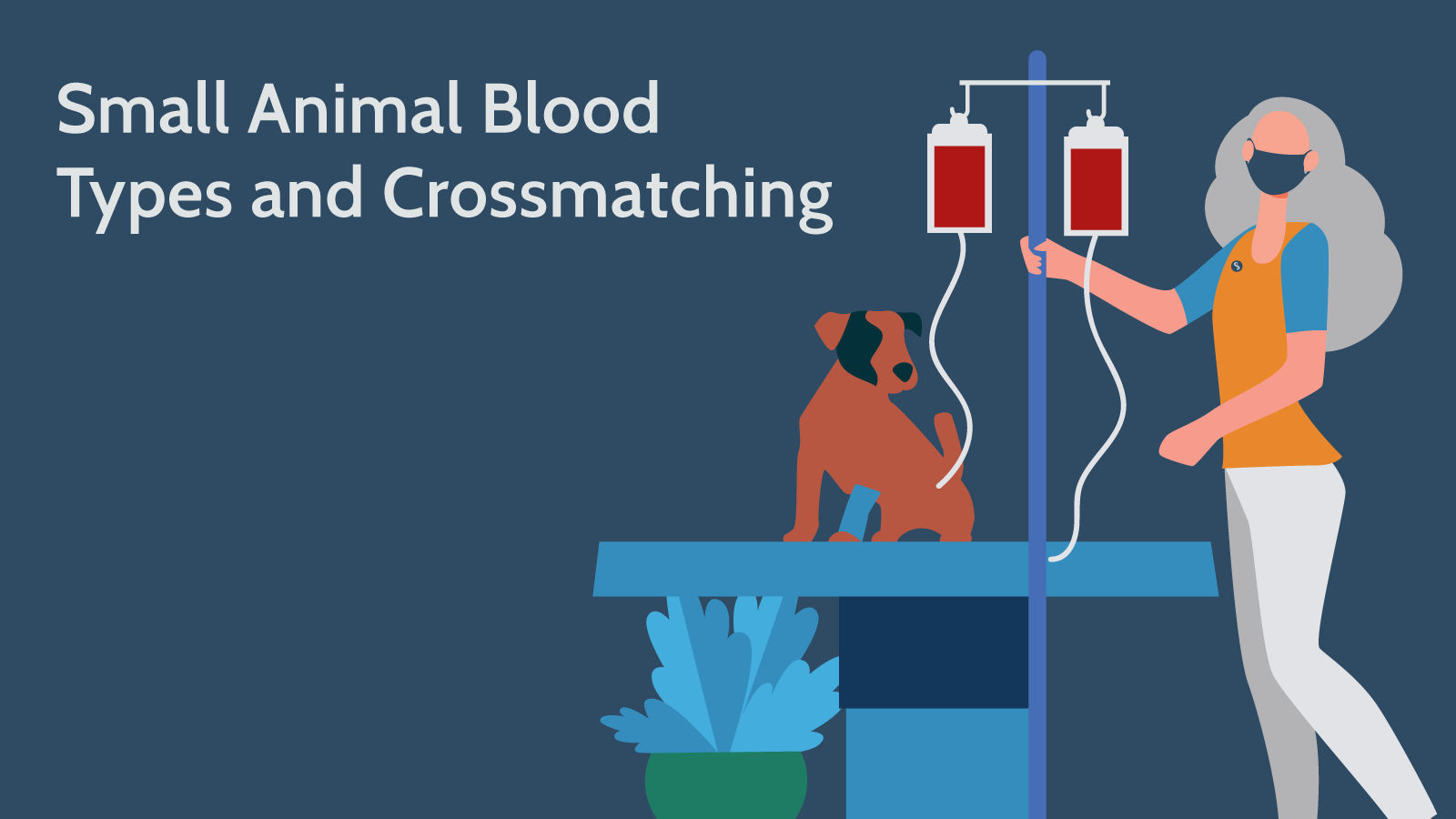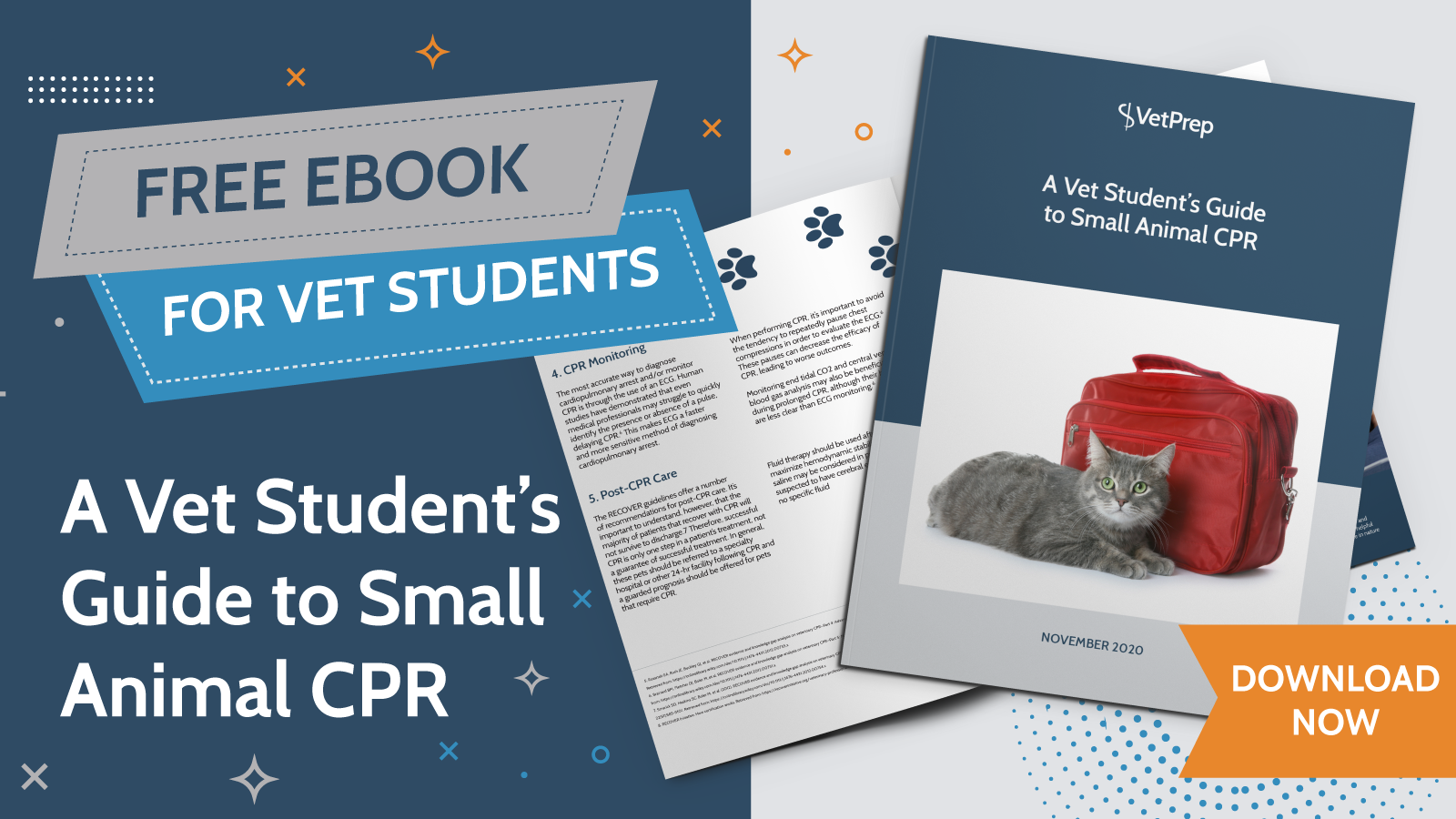
As a veterinary student, you will likely learn about canine and feline blood types and crossmatching in extensive detail. Sometimes it can be a challenge, however, to distill this extensive knowledge down to the practical knowledge necessary to perform a blood transfusion.
In general practice, the most important transfusion topics to comprehend are blood types and crossmatching. With an understanding of these topics, you can easily read and follow published step-by-step instructions on infusion volumes, infusion rates, and the other practical details of how to administer a blood transfusion. Without an understanding of blood types and crossmatching, however, even simplified step-by-step instructions may be inadequate to ensure a successful transfusion.
Feline Blood Types
The major blood group system in cats is the AB system. Cats can fall into one of three blood types: Type A, Type B, or Type AB.
Type A is the most common blood type in cats, encompassing 95% of domestic shorthairs and longhairs, as well as the majority of Siamese, Burmese, Tonkinese, Russian Blue, American Shorthair, and Oriental Shorthair cats.1 Type B blood is primarily found in Abyssinians, Birmans, British Shorthairs, Cornish Rexes, Devon Rexes, Maine Coons, Norwegian Forest Cats, Persians, Somalis, Sphinxes, and Scottish Folds, although even in these breeds Type B blood is often found in a minority of cats.1 Type AB blood is rare, but has been found in a number of different breeds.

Cats typically have naturally occurring antibodies against other blood types. Anti-A antibodies are very strong in cats with Type B blood, while Anti-B antibodies in cats with Type A blood may be weaker.2 Therefore, the transfusion reaction seen in a Type B cat receiving Type A blood will likely be more severe than the reaction observed in a Type A cat receiving Type B blood, but both cats can be expected to have a reaction. Only cats with Type AB blood lack these naturally occurring antibodies, making them universal recipients. There are no feline universal donors.
Summary of Major Feline Blood Types
|
Blood Type |
What blood types can donate blood to this cat? |
What blood types can receive blood donated by this cat? |
|
A |
A |
A, AB |
|
B |
B |
B, AB |
|
AB |
A, B, or AB (universal recipient) |
AB |
An additional blood antigen, identified in 2007, may also be responsible for a small number of transfusion reactions in cats. The Mik antigen is found in approximately 94% of domestic shorthaired cats.1 In the limited number of cats that lack this antigen, a transfusion reaction may occur if they are transfused with blood from a cat that has the Mik antigen, even if the donor and recipient cats have the same blood type. This possibility underscores the need for crossmatching, even when both donor and recipient blood types have been assessed.
Canine Blood Types
Canine blood types are based on the dog erythrocyte antigen (DEA) system. Over a dozen different blood types have been identified in dogs.3 While all of these antigenic blood types have some potential to stimulate a transfusion reaction, DEA 1.1 has been identified as the most antigenic blood type. Therefore, dogs of other blood types that receive blood from a DEA 1.1 donor are the most likely to experience a significant transfusion reaction.
Unlike cats, dogs do not have naturally occurring antibodies against other blood types. For this reason, the first blood transfusion in any dog is very unlikely to be associated with a significant transfusion reaction. If DEA 1.1 blood is given to a dog of another blood type, however, the recipient dog may develop anti-1.1 antibodies after the transfusion.
Given the lack of first-time transfusion reactions, crossmatching is not considered to be strictly necessary when administering a dog’s first blood transfusion. It is still recommended, in order to avoid giving red blood cells that may have a short half-life, but canine crossmatching is sometimes skipped in emergency situations when the recipient has not had a prior transfusion. Later transfusions, however, should always have a crossmatch performed prior to transfusion.
Crossmatching
There are two types of crossmatch: major crossmatch and minor crossmatch.
- Major crossmatch: tests for antibodies in the recipient serum against donor erythrocytes.
- Minor crossmatch: tests for antibodies in the donor plasma/ serum against recipient erythrocytes.
Major crossmatching should always be performed prior to transfusion in cats. In dogs, a major crossmatch is only strictly necessary in dogs that have received prior transfusions, that have an unknown transfusion history, or that received a transfusion within the previous several days (even if the same donor will be used).1 However, if time is available, a major crossmatch is recommended even in canine patients.
A minor crossmatch is typically considered less vital than a major crossmatch, in both dogs and cats. Minor reactions can occur, however, and a minor crossmatch can help prevent these reactions. Therefore, this test should still be considered in all patients receiving a transfusion.1
Ideally, crossmatching should be performed using a commercially available test kit.3 In an emergency setting, however, a slide crossmatch can be used as a crude method of assessment.1 For the major crossmatch, two drops of recipient plasma are mixed with one drop of donor blood and examined under a microscope for agglutination. For a minor crossmatch, a similar test is performed using two drops of donor plasma and one drop of recipient blood. It’s important to recognize that the slide crossmatch technique will fail to identify hemolytic reactions and other types of reactions, making it less beneficial than a commercially available crossmatch test.1
Autoagglutination on the major crossmatch indicates a high likelihood of a significant transfusion reaction. Therefore, the donor blood should not be administered.
If autoagglutination is seen on the minor crossmatch, there are two options:
- Avoid using the donor blood and find a different donor.
- Proceed with caution, washing the red blood cells prior to administration.
If no autoagglutination is seen on the major or minor crossmatch, proceed with the transfusion.

Use Your Resources
As a general practice veterinarian, I don’t perform blood transfusions on a regular basis. If you find yourself in a similar situation, it isn’t essential to remember every single detail of transfusion medicine. Instead, focus on having a good grasp of the basics. If you understand the basics of blood types and crossmatching, you can easily consult a textbook or other resource for the details if and when you actually need to perform a transfusion.
References
- Vap LM. 2010. An update on blood typing, crossmatching, and doing no harm in transfusing dogs and cats. DVM360. Retrieved from: https://www.dvm360.com/view/update-blood-typing-crossmatching-and-doing-no-harm-transfusing-dogs-and-cats
- Cornell University College of Veterinary Medicine. Blood types. EClinPath. Retrieved from: https://eclinpath.com/hemostasis/transfusion-medicine/blood-types/
- Sirois, M. 2019. Blood Typing and Crossmatching. VetFolio. Retrieved from: https://www.vetfolio.com/learn/article/blood-typing-and-crossmatching



